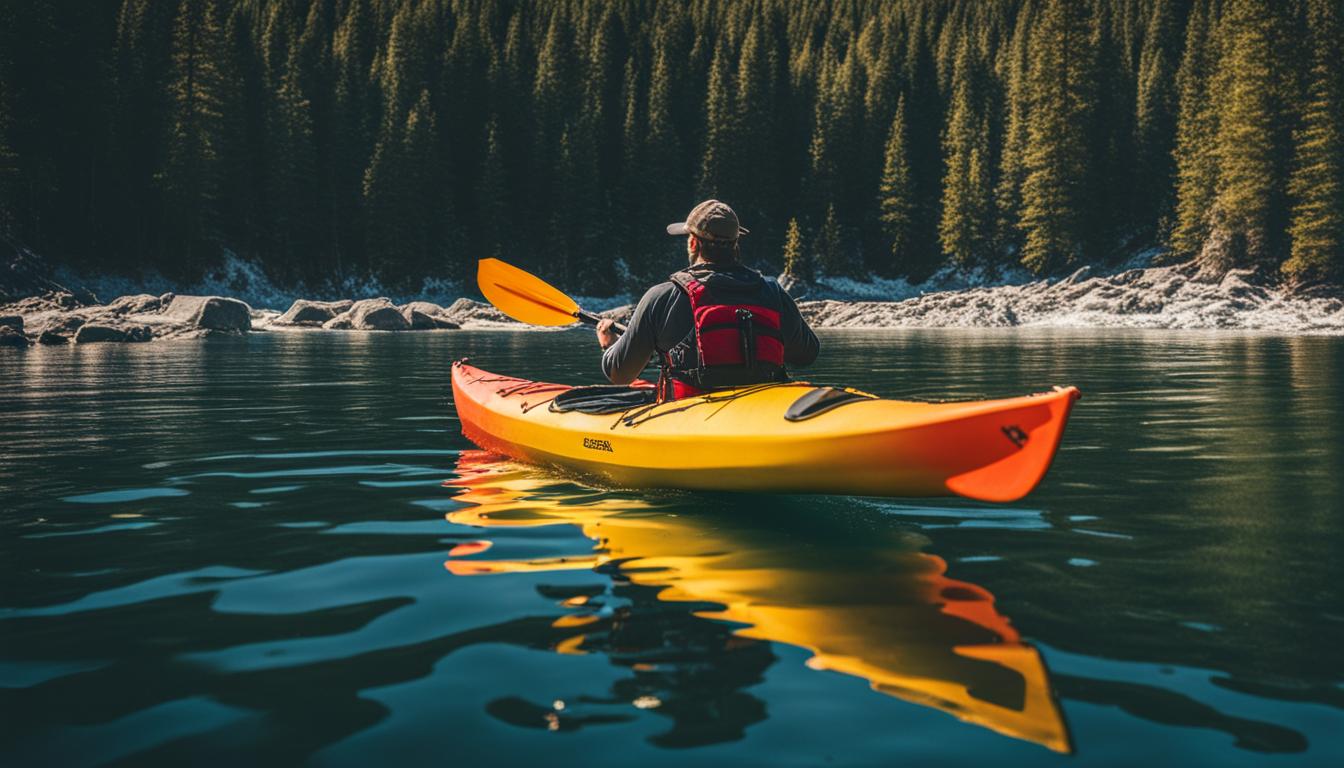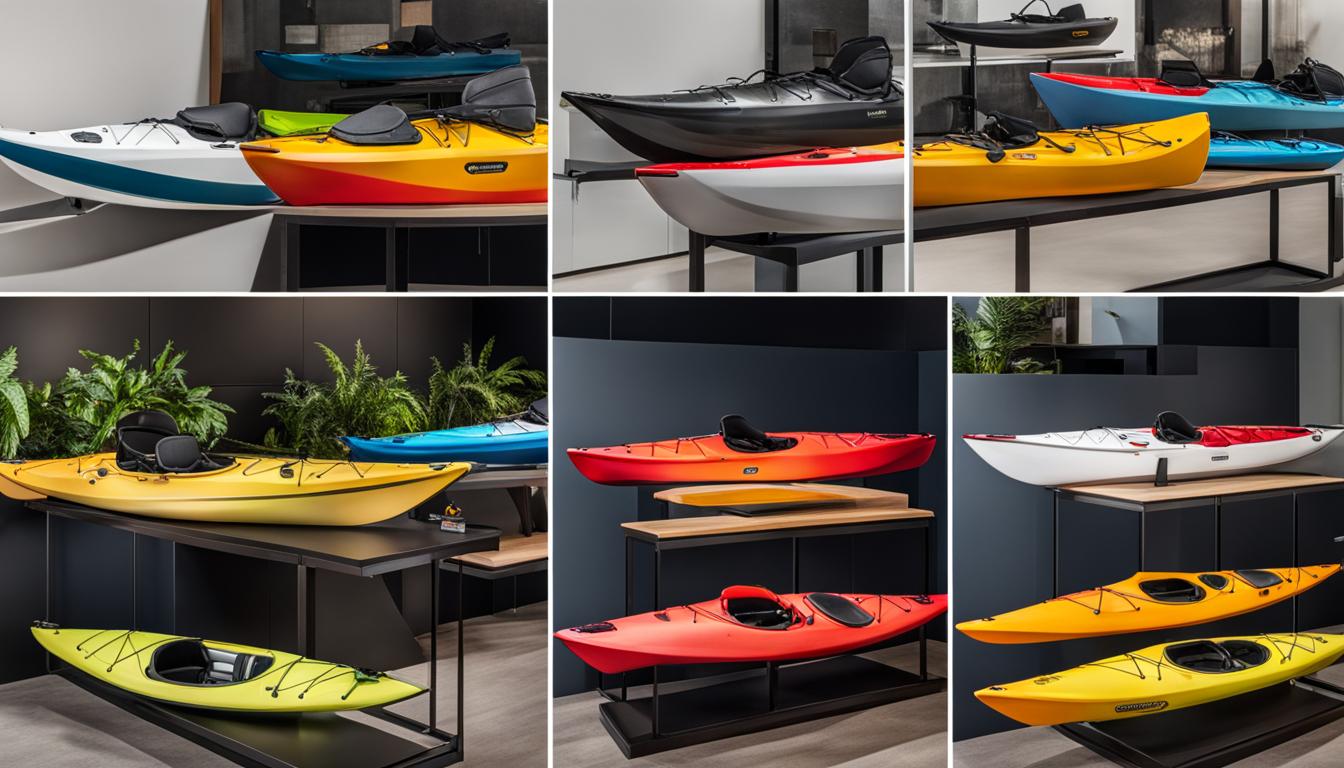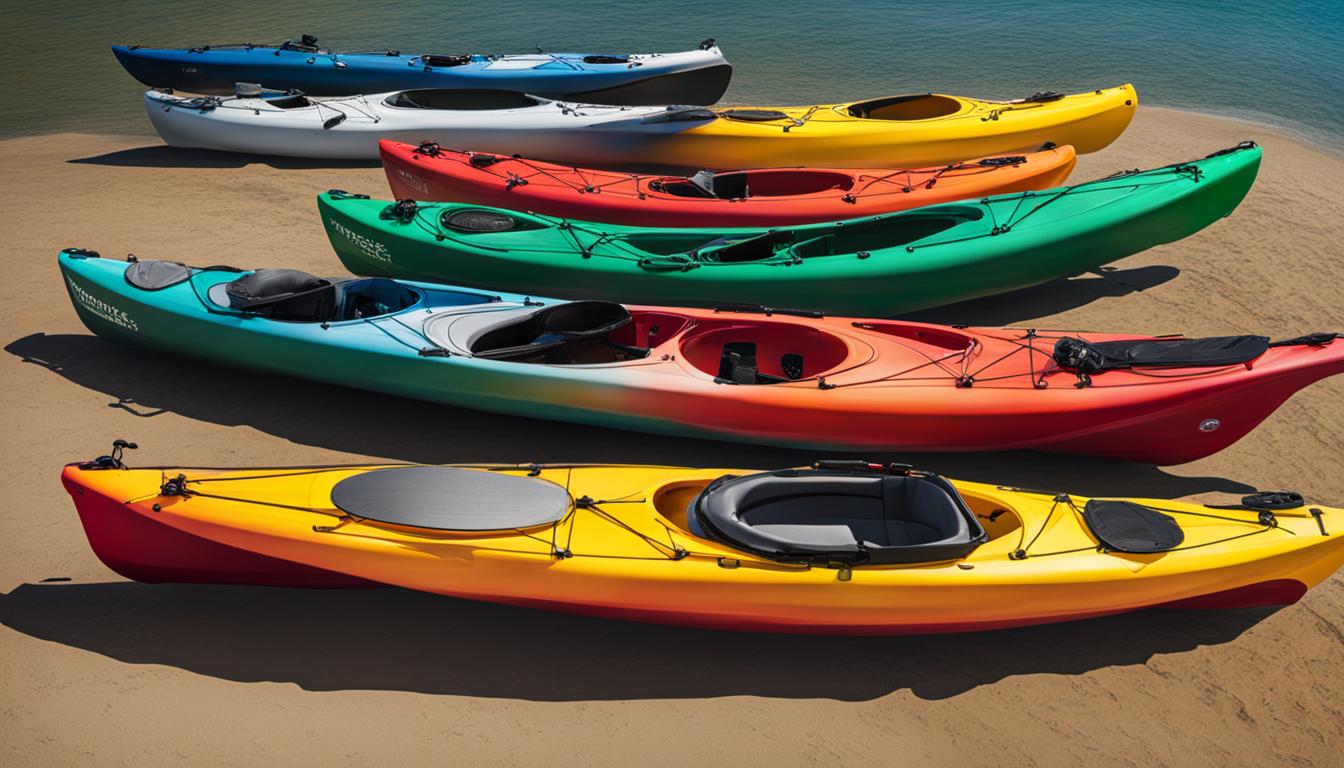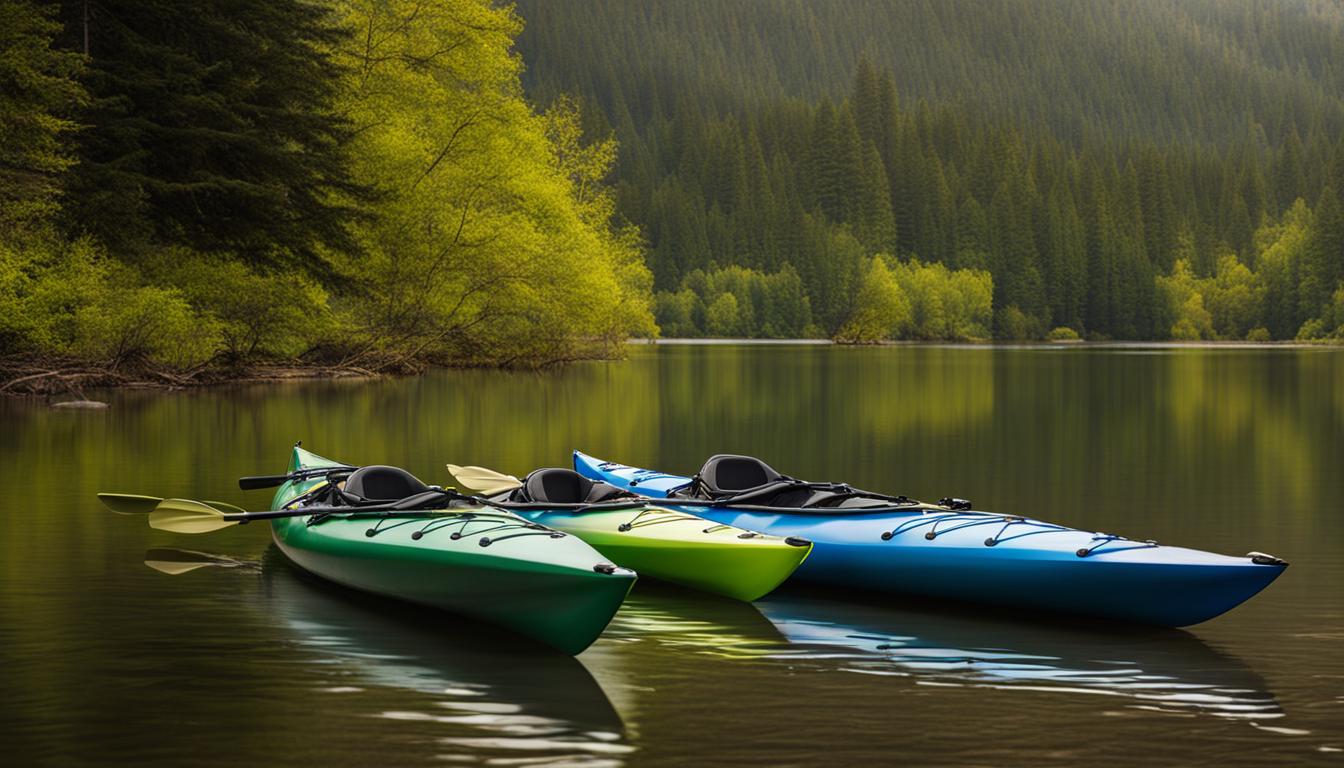Negotiating the price of a kayak can help you score a great deal and save money on your purchase. By mastering the art of negotiation, you can ensure that you get the best price possible.
In his book “Never Split The Difference: Negotiating As if Your Life Depended on It,” former FBI agent Chris Voss shares techniques and tactics that can help you become an expert negotiator. By studying your negotiator, avoiding assumptions, controlling your mind, slowing down the conversation, and understanding the true meanings of “yes” and “no,” you can negotiate effectively and get the result you desire. Practice is also key to becoming a better negotiator, so start incorporating negotiation habits into your everyday life. Remember, negotiation is about finding a win-win situation and reaching a compromise.
Key Takeaways:
- Master the art of negotiation to get the best price for your kayak.
- Study techniques from expert negotiators to improve your negotiating skills.
- Avoid assumptions and control your mind during negotiations.
- Understand the true meanings of “yes” and “no” to navigate the negotiation process.
- Incorporate negotiation habits into your everyday life to become a better negotiator.
Understanding the Importance of Negotiation Techniques
When it comes to negotiating the price of a kayak, understanding the importance of different negotiation techniques can give you the upper hand. By employing specific strategies, you can effectively lower kayak prices and get the best deal from sellers.
One important technique is studying your negotiators. By gathering information about their wants and needs, you can respond effectively during negotiations. Additionally, learning to read body language can provide valuable insight into a negotiator’s true intentions. For example, subtle cues like crossed arms or avoiding eye contact may indicate resistance to lowering prices.
Remember, negotiation is not just about reaching a compromise, but about finding a win-win situation for both parties.
Another crucial technique is controlling your mind during the negotiation process. By staying calm and composed, you can make more rational decisions and avoid being swayed by emotions. Slowing down the conversation and watching your voice can create a calm and trusting environment, increasing the chances of a successful negotiation.
Mastering Negotiation Techniques
Understanding the true meanings of “yes” and “no” is also essential in negotiation. Sometimes, a “no” can be an opportunity to explore other possibilities, and a “yes” may not necessarily mean agreement. By digging deeper and asking calibrated questions, you can uncover hidden information and gain more control over the negotiation.
By mastering these negotiation techniques, you can navigate the process of price haggling with kayak sellers more effectively. Remember, negotiation is about reaching a mutually beneficial agreement, so approach it with confidence and the willingness to find common ground.
Strategies for Reducing Dependence on Powerful Platforms
As retailers and manufacturers increasingly rely on powerful platforms like Google, Amazon, and Kayak to reach customers and sell products, it’s essential to consider strategies for reducing dependence on these platforms. While they offer significant reach and exposure, these platforms can sometimes capture a disproportionate share of the value created by businesses. To level the playing field and retain more of the value they create, businesses can employ several strategies.
Exploit the Platform’s Need to be Comprehensive
One effective strategy is to exploit the platform’s need to be comprehensive. By making your presence on the platform indispensable, you can negotiate a better deal. For example, American Airlines was able to negotiate favorable terms with the travel website Kayak by ensuring that their flights were a crucial part of Kayak’s comprehensive travel offerings. This approach leverages the platform’s reliance on having a wide range of options available to its users.
Identify and Discredit Discrimination
Another strategy is to identify and discredit any discrimination that may be taking place on the platform. Public complaints about eBay’s favoritism towards certain suppliers, for example, led to a reversal of the policy. By shedding light on unfair practices and advocating for a level playing field, businesses can challenge the status quo and achieve better outcomes.
Create Alternative Platforms
In some cases, creating alternative platforms can help reduce dependence on powerful platforms. Regal Entertainment and other theater chains, for instance, created their own ticketing platform called Fandango to offer an alternative to existing ticketing services. By creating a viable alternative, businesses can provide customers with more options while reducing their reliance on dominant platforms.
Finally, dealing more directly with customers can also help reduce dependence on powerful platforms. Restaurants, for example, can offer takeout options outside of online platforms like Foodler and GrubHub, enabling them to retain more of the value they create. By providing their own delivery services or encouraging customers to order directly, businesses can establish a direct connection with their customers and reduce the influence of intermediaries.
By implementing these strategies, businesses can reduce their dependence on powerful platforms, increase their bargaining power, and retain a greater share of the value they create.
Mastering Propulsion and Casting Techniques for Kayak Angling
If you want to excel at kayak fishing, it’s essential to master propulsion and casting techniques. These skills will not only enhance your overall fishing experience but also increase your chances of success on the water. Learning to paddle one-handed and investing in a pedal-powered propeller can significantly improve your fishing capabilities.
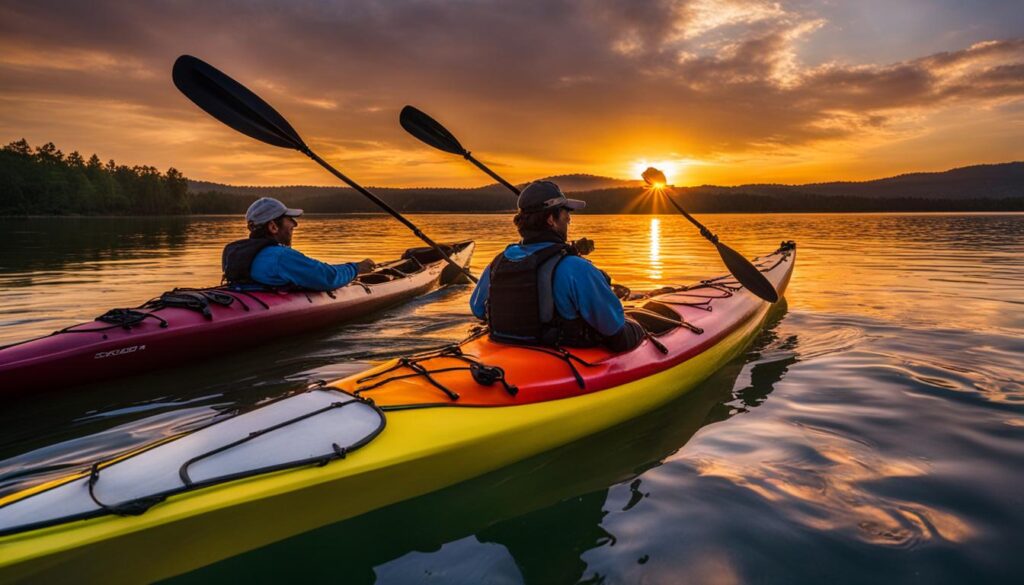
Casting is another crucial skill that every kayak angler should develop. One-handed casting allows you to multitask by simultaneously paddling and fishing. To maximize your casting efficiency, practice casting stealthily and keeping your bait low to the water. This approach will help you avoid spooking fish and increase your chances of getting a bite.
Positioning your seat for stability is also vital in mastering casting techniques. By maintaining balance and stability, you’ll be able to cast with precision and land fish more effectively. Remember, practice makes perfect, so spend time honing your casting skills both on and off the water.
Table: Comparison of Propulsion and Casting Techniques
| Technique | Advantages | Disadvantages |
|---|---|---|
| One-handed Paddling | Allows for hands-free fishing | Requires practice to maintain stability |
| Pedal-Powered Propeller | Provides efficient and hands-free propulsion | Can be costly to invest in a pedal-powered kayak |
| One-handed Casting | Allows for multitasking while fishing | Requires practice to maintain accuracy |
| Low and Stealthy Casting | Reduces the chance of scaring away fish | Requires technique to maintain control and accuracy |
| Seat Positioning for Stability | Improves balance and casting precision | May limit maneuverability in the kayak |
By mastering propulsion and casting techniques, you’ll have a significant advantage when it comes to kayak angling. These skills will not only enhance your fishing experience but also increase your chances of landing that trophy fish. So, practice regularly and experiment with different techniques to find what works best for you.
Mastering Your Kayak’s Movement for Better Angling
When it comes to kayak fishing, understanding how to maneuver your kayak effectively is crucial. By mastering your kayak’s movement, you can position yourself in the best fishing spots, conserve energy, and improve your overall angling experience.
One technique for maneuvering your kayak is using your feet to steer your sit-on-top kayak. By dropping a foot in the water, you can easily adjust your kayak’s direction or anchor it in place while you focus on fishing. This technique gives you more control and flexibility on the water.
Another way to enhance your kayak’s movement is by utilizing an anchor. Using an actual anchor can help keep your kayak stationary in one spot, allowing you to stay in a prime fishing location without drifting away. This is especially helpful when you want to focus on a specific area or cast your line accurately.
In situations where you’re facing strong winds or currents, it can be beneficial to use the shoreline to your advantage. Paddling along the shoreline can provide some protection from the elements and reduce wind and wave activity, making it easier for you to navigate and conserve energy.
Table:
| Technique | Description |
|---|---|
| Feet Steering | Use your feet to control the direction of your kayak, allowing for precise maneuvering and easy adjustments. |
| Using an Anchor | Secure your kayak in one spot using an anchor to focus on fishing without worrying about drifting away. |
| Utilizing the Shoreline | Paddle along the shoreline to take advantage of reduced wind and wave activity, conserving energy and improving stability. |
By incorporating these techniques into your kayak angling routine, you can become more skilled at maneuvering your kayak, leading to better fishing opportunities and a more enjoyable experience on the water.
Embracing the Growing Sport of Kayak Angling
The combination of kayaking and fishing, known as kayak angling, is a growing sport that offers numerous benefits. Whether you’re fishing in lakes, streams, rivers, or the ocean, kayak angling allows for action-packed retrieves, low price points, and great accessibility. To fully embrace this sport, it’s important to master propulsion, casting, and maneuvering techniques. By learning to propel your kayak efficiently, you can free up your hands for fishing. Hone your casting technique from a seated position in the kayak to improve your fishing success. Understanding how to move and position your kayak effectively allows you to stay in the best fishing spots and conserve energy.
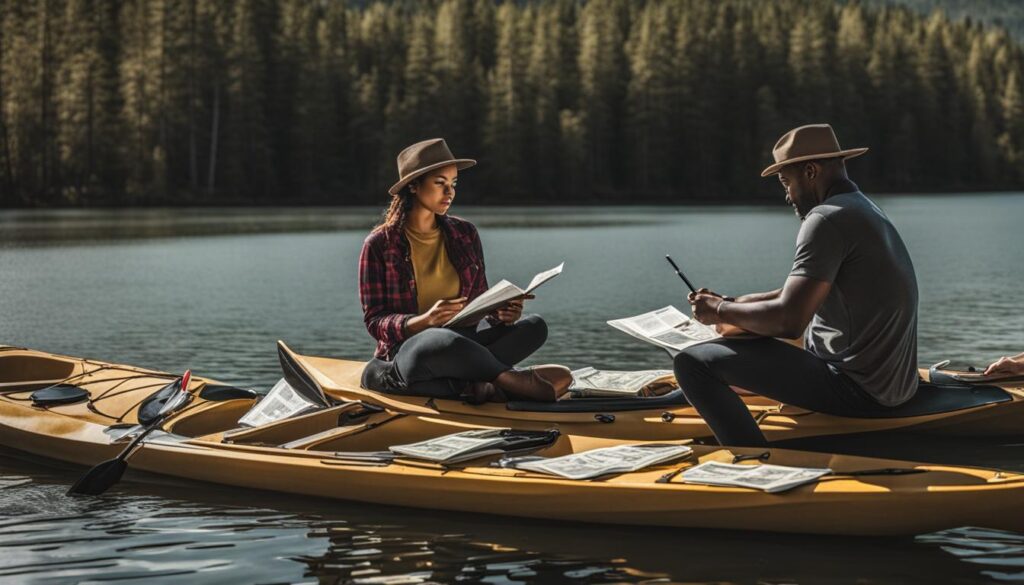
When it comes to kayak angling, being able to negotiate the purchase price of your kayak can make a big difference. By employing effective haggling strategies, you can potentially save money and secure a better deal. Start by doing your research and comparing prices from different sellers. This knowledge will give you leverage during negotiations. Be confident and assertive in expressing your desired price range while remaining open to compromise. Remember, negotiation is all about finding a win-win solution. By having a clear understanding of your budget and the value you place on the kayak, you can negotiate confidently and secure a favorable price.
“Negotiation is all about finding a win-win solution.”
Additionally, consider other factors that can influence the negotiation process. For example, the time of year may impact the price of kayaks, with offseason sales potentially offering better deals. Don’t be afraid to ask for extras or discounts, such as complimentary accessories or reduced delivery fees. Building a rapport with the seller can also work in your favor, as a positive relationship can create goodwill and increase the likelihood of a successful negotiation. Remember, practice makes perfect, so don’t hesitate to hone your negotiation skills in other aspects of your life. The more you negotiate, the more confident and effective you’ll become in securing the best deals for yourself.
Incorporating Negotiation Skills into Everyday Life
Negotiation skills are valuable not only in negotiating kayak prices but also in various aspects of everyday life. By adopting negotiation habits, you can become a better negotiator in all areas. Whether it’s negotiating a higher salary at work or getting a better deal on a product or service, practicing negotiation can help you sharpen your skills.
Here are some practical strategies to incorporate negotiation skills into your everyday life:
- Identify your goals: Clearly define what you want to achieve from the negotiation. Having a clear vision of your desired outcome will help guide your negotiation strategy.
- Do your research: Gather as much information as possible about the person or party you will be negotiating with. Understanding their needs, motivations, and preferences can give you an advantage during the negotiation process.
- Practice active listening: Pay attention to what the other person is saying and try to understand their perspective. Actively listening can help you uncover hidden opportunities for mutual benefit.
- Seek win-win solutions: Negotiation is not about winning at the expense of others. Look for solutions that satisfy both parties’ interests and create mutually beneficial outcomes.
- Be flexible and open to compromise: Negotiation often involves give and take. Be willing to make concessions and find middle ground that both parties can agree on.
Remember, negotiation is a skill that can be developed and improved over time. The more you practice, the more confident and effective you will become. So, don’t shy away from negotiating in your everyday life. Embrace opportunities to hone your negotiation skills and enjoy the benefits of better outcomes and improved relationships.
By incorporating negotiation skills into your everyday life, you can become a savvy negotiator in all areas, including the negotiation of kayak prices. So, whether you’re bargaining with kayak sellers or negotiating in other contexts, these skills will serve you well. Start practicing today and watch your negotiation prowess grow.
Quick Tips for Everyday Negotiation:
- Stay calm and composed during negotiations to maintain a clear head.
- Focus on the other person’s needs and find common ground.
- Use open-ended questions to gather information and encourage dialogue.
- Be prepared to walk away if the negotiation isn’t meeting your goals.
| Benefits of Incorporating Negotiation Skills | Examples |
|---|---|
| Improved Communication | Successfully resolving conflicts at home or in the workplace. |
| Financial Savings | Getting a better deal on a car purchase or negotiating lower rent. |
| Enhanced Relationships | Building stronger connections by finding mutually beneficial solutions. |
| Increased Confidence | Feeling more empowered and in control during negotiations. |
Conclusion
Mastering the art of negotiating kayak prices can help you save money and get the best deal on your purchase. By applying techniques from expert negotiators and practicing negotiation in everyday life, you can become a more confident and effective negotiator.
Additionally, learning and honing propulsion, casting, and maneuvering techniques can improve your success in kayak angling. Embrace the growing sport of kayak angling and enjoy the benefits of action-packed retrieves, low price points, and great accessibility.
Happy negotiating and happy fishing!
FAQ
How can I negotiate the price of a kayak?
By studying negotiation techniques, understanding the true meanings of “yes” and “no,” and practicing negotiation habits, you can become a skilled negotiator and potentially score a great deal on your kayak purchase.
What are some effective negotiation techniques?
Some effective negotiation techniques include studying your negotiator, avoiding assumptions, controlling your mind, slowing down the conversation, understanding body language, and using calibrated questions to maintain control.
How can businesses reduce dependence on powerful platforms?
Businesses can reduce dependence on powerful platforms by making their presence indispensable, discrediting discrimination, creating alternative platforms, and dealing more directly with customers.
What are some important propulsion and casting techniques for kayak fishing?
Some important techniques for kayak fishing include learning to paddle one-handed, investing in a pedal-powered propeller, practicing one-handed casting, casting stealthily and low, and positioning your seat for stability.
How can I maneuver my kayak effectively while fishing?
You can maneuver your kayak effectively by using your feet to steer or anchor your kayak, using an actual anchor, taking advantage of the shoreline to conserve energy, and staying centered in your kayak for balance and stability.
What are the benefits of kayak angling?
Kayak angling offers action-packed retrieves, low price points, and great accessibility in various fishing environments such as lakes, streams, rivers, and the ocean.
How can negotiation skills be applied in everyday life?
Negotiation skills can be applied in various aspects of life, such as negotiating a higher salary or getting a better deal on products or services. By adopting negotiation habits and practicing active listening, you can become a more confident and effective negotiator.

